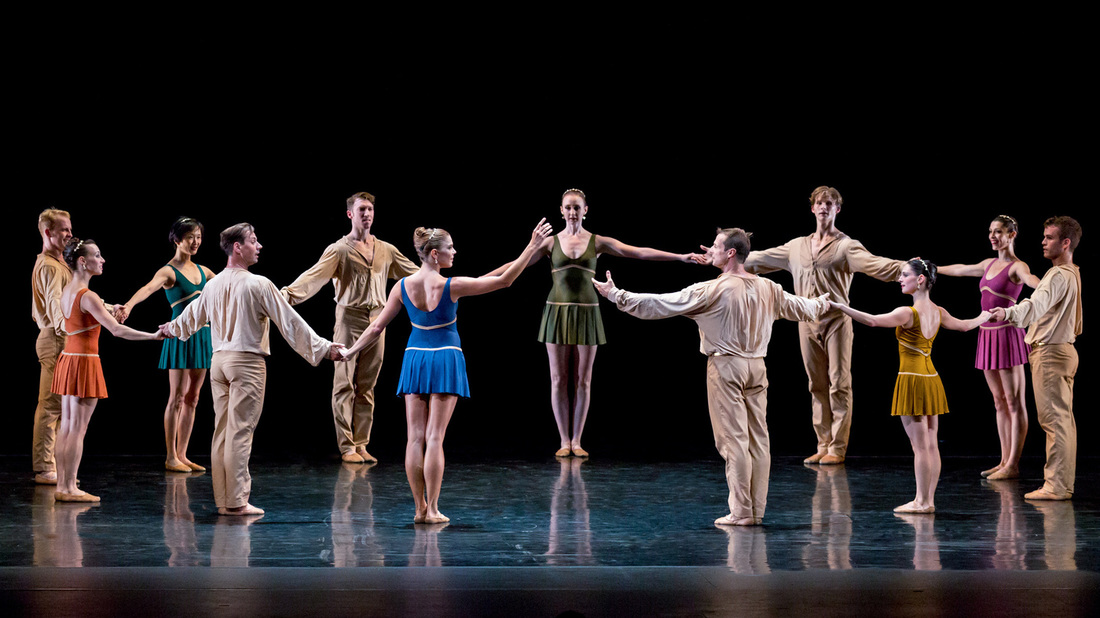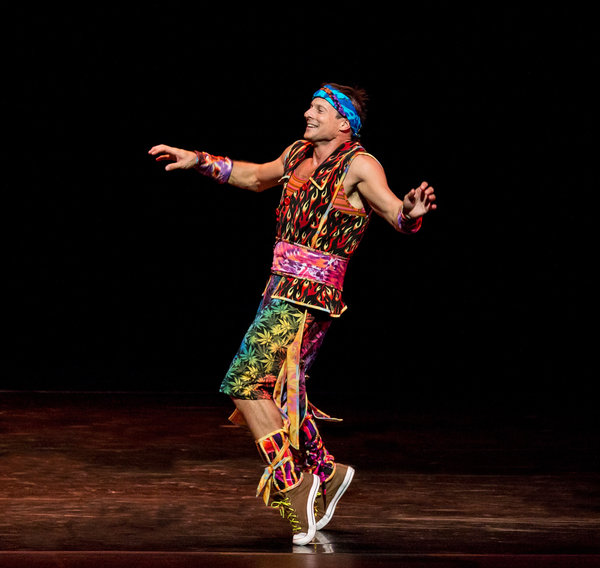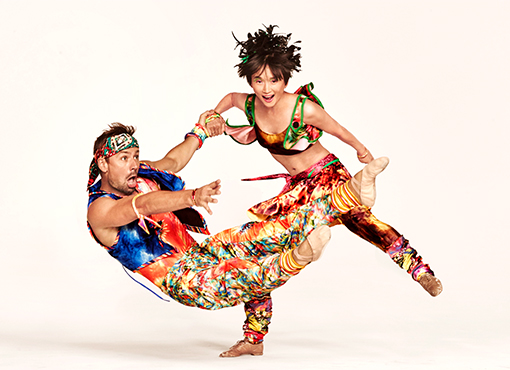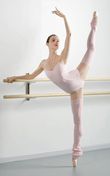Twyla Tharp seems to understand this idea, and her propensity for shimmying and shaking feels right so much of the time—like when she uses jerky phrases to undercut the serious perfection of music like Bach’s, as she does in her new piece Preludes and Fugues, to excerpts from his Well-Tempered Clavier I and II which I saw at the David H. Koch Theater last weekend. The messy humanness of these interpolated tics marries so well with the sanctity of the Bach—music that is so beautiful it hardly seems like it could be man-made. How can one not spasmodically rejoice that something so perfect exists? Great music (and great art in any form) can indeed tingle the spine and make one involuntarily shiver.
Preludes and Fugues was one of four new pieces Tharp made for her 50th Anniversary Tour. The troupe performed for ten weeks all across the country, but the Koch Theater—its final stop—could not be a more perfect setting for the program. The choreographic bookends which opened each half of the show, First Fanfare and Second Fanfare (to annunciatory brass compositions by John Zorn), echoed the Fanfare for a New Theater which Igor Stravinsky created for the inauguration of the building in 1964. In fact, the massive chandelier which hangs over the auditorium is meant to evoke
First Fanfare and Second Fanfare were used as quick introductions to the casts of each work, as every dancer had a cameo and both pieces were performed in the costumes for the works that followed. Preludes and Fugues was the centerpiece of the first half of the program. It opened with another rousing full-cast number, but then it shifted gears with a lovely pas de deux for Savannah Lowery and Eric Otto. Savannah is a coworker and close friend of mine, and she was truly impressive in the Tharp throughout the night. Her relaxed, confident demeanor—she never looked forced or overeager—seemed to me the perfect delivery for Tharp’s style. Her two pas de deux were the highlight of the performance for me. All of the dancers were amazing in Preludes though, and I especially liked Kaitlyn Gilliland, Ron Todorowski, Eva Trapp, and Nicholas Coppula.
It was thrilling to me to see Kaitlyn, my frequent guest blogger and multi-talented friend, taking on yet another new choreographic style. Kaitlyn bravely pushes herself to experience as many different genres as she can, and it has transformed her dancing in remarkable ways. I chuckled at one point in Preludes though, as Kaitlyn performed a turning, hopping arabesque sequence that pulled into a double pirouette that was a direct quote from the steps of the Dark Angel in Balanchine’s Serenade—a role Kaitlyn danced several times on the very same stage. With her long lean lines and her regal comportment—she literally never hits a bad position—no matter how far away from ballet she gets Kaitlyn is a born ballerina, and her past chased her into the Tharp a bit!
The second showcase piece on the program was Yowzie, which was set to a mix of blues songs by artists like Jelly Roll Morton and Fats Waller as performed by Henry Butler, Steven Bernstein and the Hot 9. I’m sorry to say that I hated everything about it—from the hideous costumes (tie-dyed MC Hammer pants and cockatiel headpieces?) to the space-age backdrop (both by Santo Loquasto). Throughout the piece the four leads mugged and overacted in a washed out, vaudeville spotlight down front. From where I sat, in the back of the orchestra, it was unclear what they were carrying on about most of the time. Also, I felt it was in poor taste to have these etiolated leads hamming it up and pretending to be drunk to soulful blues music in mock-African garb.
For some reason John Selya kept shouting things, but whatever he said was inaudible to everyone past the third row. The biggest choreographic innovation for the piece seemed to be Selya mincing around in his sneakers on tiptoe. That might have been funny had not Pee Wee Herman covered that ground back in 1985 with more suavity. I wondered how I could sit through the piece, when I realized that if I just ignored the antics of the principals and concentrated on the dancers in the background there was some good dancing to be seen.
Long before the internet and mashups were a thing Twyla Tharp was doing them on the stage. In her best pieces—like Push Comes to Shove, Deuce Coupe, and In the Upper Room—she plays with contrasting genres of music and dance vocabulary. It is cool to see the tap times step done by ballet dancers to Philip Glass music in In the Upper Room, for example. And Mikhail Baryshnikov was stellar while slumming it in Push Comes to Shove. When he nonchalantly broke out into eight pirouettes every now and then it was wonderfully irreverent. In that same piece it was also funny when ballerinas in pointe shoes danced jazz moves to Haydn. I also like some of Tharp’s pure pop pieces like Movin’ Out. But I could not get behind Yowzie, in which wit had devolved into camp. It was all trying to be too funny. That frisson of joy that impels dance cannot be forced, it must derive naturally.




 RSS Feed
RSS Feed